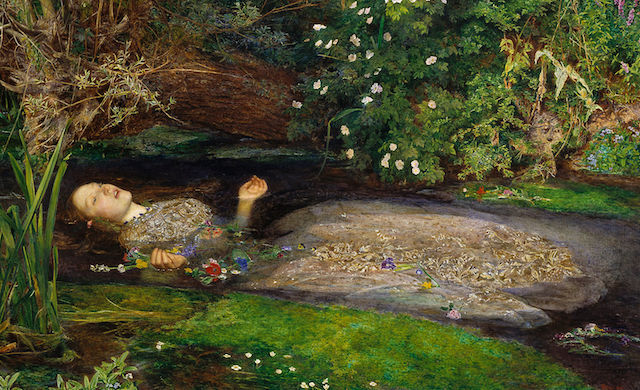
Sometimes when I close my eyes to sleep at night, I can hear the collective screaming, crying and sighing of generations upon generations of women: raped, forced to bear children, forced to give away their children, forced to provide nourishment to the man who would then use his strength to tyrannize them, forced to give up all they held dear for the sake of complete obedience to men in the name of religion, their dreams snatched from their eyes, beaten and bruised, mutilated, and killed.
I lie awake for hours, thinking about how it all started:
Women have always been brave, with their superior bodies which enable them to give birth to, and feed, their children.
This superior attribute of theirs, however, served as a primary ingredient in establishing women as the underdogs in the earliest societies.
The “classic/natural feminine attributes,” like the ability to feed and take care of little children and oversee their growth and development are neither classically, nor naturally, feminine as men are just as capable of performing these jobs as women. It is, however, women’s perceived inability to actively be a part of the work force during pregnancy that gave men the chance to establish their dominance over women and to classify them as the weaker strata of the society.
In early societies, it was man’s role as hunter that allowed him to work with tools of aggression and arrest. Men worked with the capturing and breeding of animals while women worked as gatherers. In no time, men looked at women as someone to be controlled and used for breeding alongside the animals. Soon, man was hunting and seizing women and young men from other tribes that happened upon his territory. Therefore, the subjugation of women began around the same time as slavery did (Maria Mies, in her book, Patriarchy and Accumulation on a World Scale provides evidence to support this theory).
While man was busy accumulating surplus and property, women were bearing children, cultivating crops and participating in what would later come to be known as “domestic labor.” As societies developed differently in different parts of the world, one section of the society also became richer and mightier than the other due to accumulation of wealth. This section consisted almost entirely of men, and not because they were physically or intellectually superior to women, but because women were tied down by the hour to hour drudgery of caring and providing for young children—and, also, these very men. Men used the nourishment and the freedom from many everyday tasks provided to them by women to then dominate and subjugate those very women.
Later, societies which were built on hunting, war and conquest (i.e., the Arabs, the Aryans, the Chinese and the Jews) swelled and overcame other types of societies and brought forward the “patriarchal system.”
Through history, countless examples of man’s downright brutal need to be dominant over women can be found. One such example is the attack on the sexual and creative independence of women in Europe under early capitalism wherein the name of “witch” hunting tens of thousands of women were slaughtered. Many of those women constituted of peasants and artists showing a freedom of spirit and creative independence, and many were midwives and healers.
In the 16th and 17th centuries, during the conquest of colonies, women in the colonies were used as labor and since they were not to be used as breeding stock, their families and children were destroyed. At the same time, the white woman was being forced to breed within strict family structures.
Therefore, we can see that child bearing has been used as a major device in the subjugation of women. In a class society, this also creates a chief conflict between classes. The capitalist class needs women to perform this job for the so-called reproduction of labor power. At the same time, the very nature of capitalism is based on extracting the maximum benefit out of its workforce: both men and women. Different societies, then, deal with this disadvantage in different ways. However, this contradiction is still the basis of women’s oppression in a capitalist society. It basically serves to ensure male domination and advantage in most arenas of life.
The history of women’s subjugation is so widespread and complex that it is impossible to analyze it in a brief manner. Different societies have their own histories of female oppression. For working class women, the difference in reproduction of labor power serves as a tool of oppression. For ruling class women, the system of property and heirs has been used for centuries as a tool for their subordination by men.
Today, in the 21st century, despite the rise in awareness regarding gender equality, women are still being oppressed in some of the most primal ways all over the world, especially in regions like North Africa and the Middle East. In Saudi Arabia, women are still forbidden to drive while in many countries women can only travel with the prior permission of their husbands. In South Asia and Sub Saharan Africa, women are married at an early age without their consent and honor killings are a common practice in Pakistan.
In most of the Middle East, only men can divorce their wives and women do not have the right to file for divorce despite abuse without the testimony of an eyewitness. Women also do not have the right to pass citizenship onto their children in the Middle East. In many countries, the court automatically grants the custody rights of the children to their fathers. Violence against women is a direct output of unequal legal rights for women, and in India, rape laws do not apply to married couples.
Even in developed countries, women earn only 77 percent of what men earn for the same amount of work. In many countries like North Sudan, Tanzania, Lesotho and Zambia women are unable to own land (the socio-cultural laws prohibit it even in the places where constitution doesn’t). And lastly, women constitute two-thirds of the world’s illiterate adults. In countries like Afghanistan, girls are restricted from going to school.
Isn’t it more than enough already? Don’t we deserve a chance to heal and recuperate after the tyranny and injustice spread over the course of history?
Women’s oppression and slavery have their historical origins around the same time. If we don’t keep people as slaves anymore, why are women still subjugated?
Child bearing is not something that women should be manipulated with. It is, instead, an excruciating albeit sacred feat that a woman carries out for all of mankind and should therefore be thanked and rewarded.
To support women globally and to even begin to repay them for everything that they have been through, here are a few things that both men and women can do:
1. Each of us has a responsibility that only we can fulfill:
We should be curious and try to learn as much as we can about what is going on with women in the world. And then we have to play our part as conscious human beings in spreading the word: creating greater awareness of the problems women face around the world, regardless of what part of the world we live in. We have to be brave. Each of us can think for ourselves and form our own opinions. Challenge the status quo.
2. To use the benefits that we have, capitalize on our strengths:
For example, if you are a teacher then use your position to educate young minds about gender equality and violence against women. If you are part of an organization with a reach in developing countries, then train and employ more women and help elevate their status for the benefit of their families and communities. No matter who you are or what you do, find a way to be of benefit.
3. Take personal accountability:
Whether one consciously does it or not, the truth is that each of us is accountable as a human being. It is for us to do whatever is in our power to reduce women’s suffering and help magnify their development, and we can start with the women that we each come into direct contact with in life. We can be mentors for the women in our lives, and begin the circle of growing, learning, developing and leading. Remember that in the business of making a change, no step is too small.
“Not that anyone here
but you would understand.
The rest of them would like to watch me
and feel nothing. Reduce me to components
as in a clock factory or abattoir.
Crush out the mystery.
Wall me up alive
in my own body.
They’d like to see through me,
but nothing is more opaque
than absolute transparency.
Look–my feet don’t hit the marble!
Like breath or a balloon, I’m rising,
I hover six inches in the air
in my blazing swan-egg of light.
You think I’m not a goddess?
Try me.”
~
~
~
Author: Kanwal Mukhtar
Image: Wikipedia
Editor: Travis May










Read 0 comments and reply